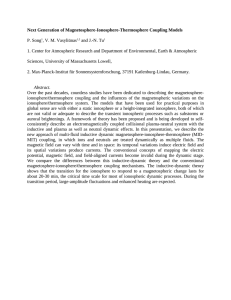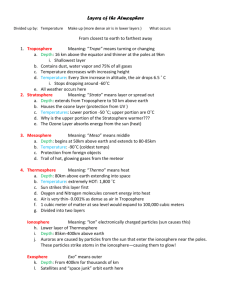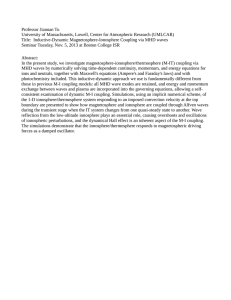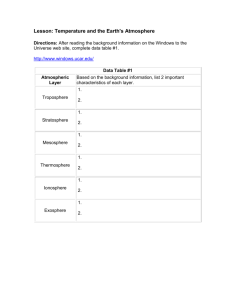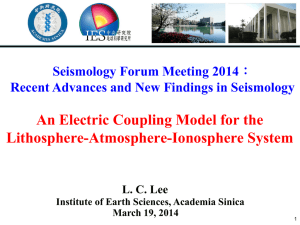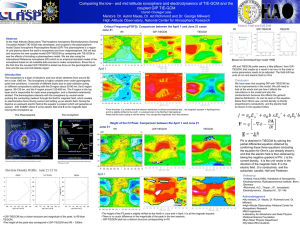Document 12625010
advertisement
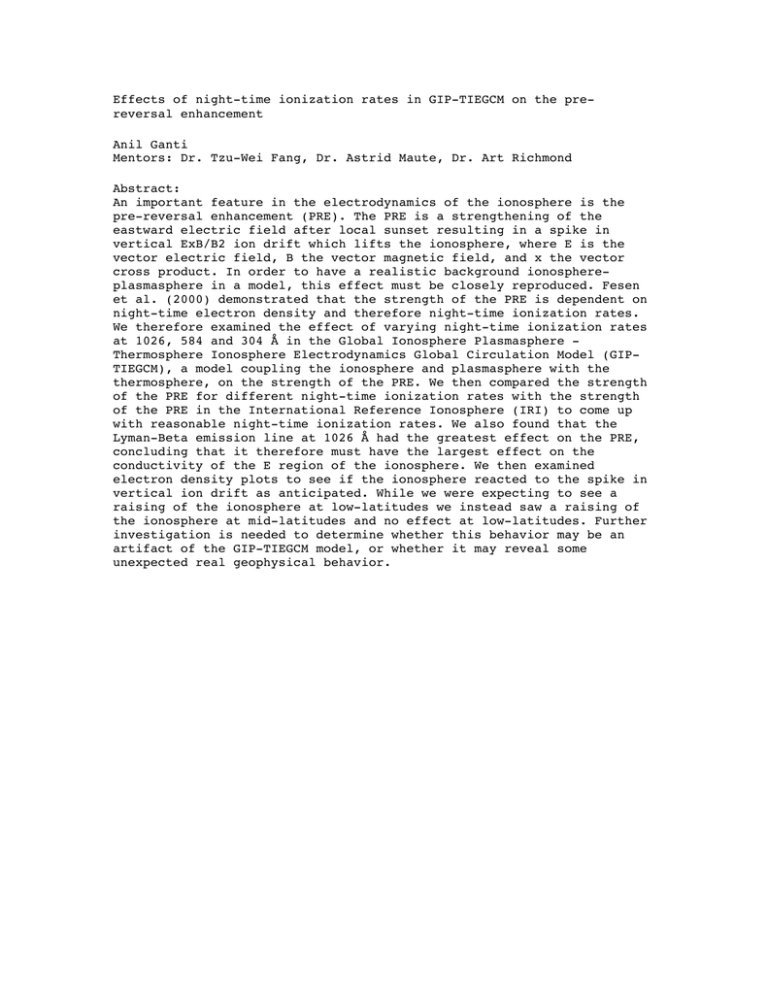
Effects of night-time ionization rates in GIP-TIEGCM on the prereversal enhancement Anil Ganti Mentors: Dr. Tzu-Wei Fang, Dr. Astrid Maute, Dr. Art Richmond Abstract: An important feature in the electrodynamics of the ionosphere is the pre-reversal enhancement (PRE). The PRE is a strengthening of the eastward electric field after local sunset resulting in a spike in vertical ExB/B2 ion drift which lifts the ionosphere, where E is the vector electric field, B the vector magnetic field, and x the vector cross product. In order to have a realistic background ionosphereplasmasphere in a model, this effect must be closely reproduced. Fesen et al. (2000) demonstrated that the strength of the PRE is dependent on night-time electron density and therefore night-time ionization rates. We therefore examined the effect of varying night-time ionization rates at 1026, 584 and 304 Å in the Global Ionosphere Plasmasphere Thermosphere Ionosphere Electrodynamics Global Circulation Model (GIPTIEGCM), a model coupling the ionosphere and plasmasphere with the thermosphere, on the strength of the PRE. We then compared the strength of the PRE for different night-time ionization rates with the strength of the PRE in the International Reference Ionosphere (IRI) to come up with reasonable night-time ionization rates. We also found that the Lyman-Beta emission line at 1026 Å had the greatest effect on the PRE, concluding that it therefore must have the largest effect on the conductivity of the E region of the ionosphere. We then examined electron density plots to see if the ionosphere reacted to the spike in vertical ion drift as anticipated. While we were expecting to see a raising of the ionosphere at low-latitudes we instead saw a raising of the ionosphere at mid-latitudes and no effect at low-latitudes. Further investigation is needed to determine whether this behavior may be an artifact of the GIP-TIEGCM model, or whether it may reveal some unexpected real geophysical behavior.
